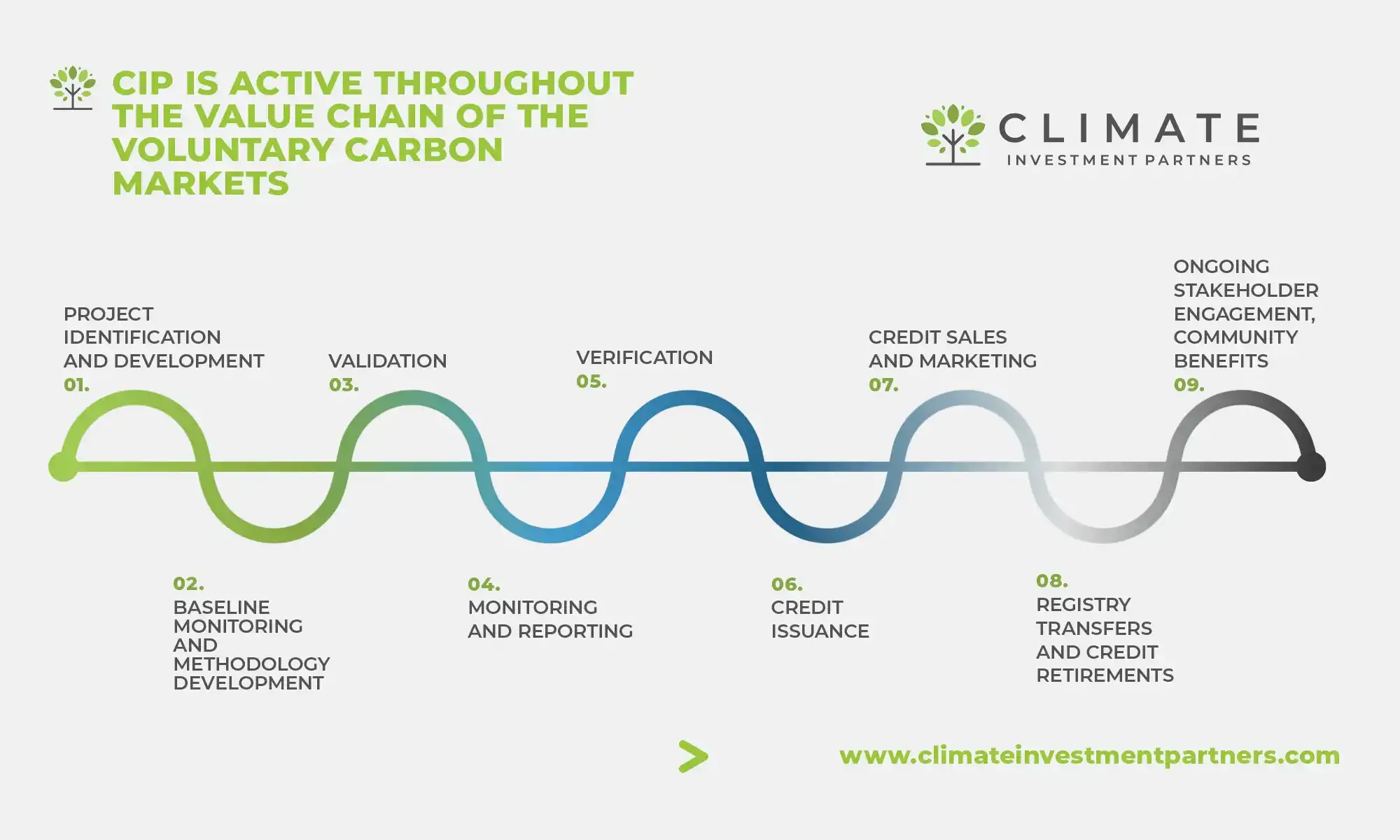How to Choose the Right Carbon Certification Standard for Your Project

As businesses and organizations increasingly turn to carbon projects to meet sustainability goals, selecting the right certification standard is a crucial step in ensuring project success. With a variety of carbon standards available, understanding their differences and choosing the one that best aligns with your project’s goals can make all the difference. In this article, we’ll guide you through the process of selecting the right carbon certification standard, with insights from our experience at Climate Investment Partners (CIP).
Why Carbon Certification Matters
Carbon certification standards are third-party systems that evaluate and validate the effectiveness of carbon reduction or sequestration projects. These certifications ensure that the emissions reductions achieved by your project are real, additional, permanent, measurable, and transparent. Certification not only lends credibility to your project but also enhances its marketability, as buyers of carbon credits look for assurances that the credits they purchase are of the highest quality.
Key Certification Standards
There are several well-established carbon certification standards, each offering specific methodologies suited to different types of projects. The most commonly used standards include:
- Verified Carbon Standard (VCS) – Managed by Verra, VCS is one of the most widely recognized and trusted standards for verifying voluntary carbon offset projects. It covers a broad range of project types, including reforestation, afforestation, and REDD+ (Reducing Emissions from Deforestation and Forest Degradation). Many of CIP’s forest and ecosystem restoration projects, such as the Native Ecosystem Restoration in Nicaragua and the Envira Amazonia Project, are certified under VCS.
- Gold Standard – Known for its focus on delivering additional social and environmental co-benefits, Gold Standard is ideal for projects that aim to not only reduce emissions but also contribute to sustainable development. For instance, our Uganda Native Reforestation and Agroforestry Project is being developed under the Gold Standard, ensuring that it supports local communities and biodiversity while sequestering carbon(FAQs for CIP’s Website).
- Climate Action Reserve (CAR) – CAR is particularly well-suited for projects in North America. It provides a comprehensive framework for projects focused on reforestation, avoiding deforestation, and sustainable land management. Our Forest Landscape Restoration in Panama project is an example of how CAR standards can be applied to tropical reforestation initiatives(FAQs for CIP’s Website).
- American Carbon Registry (ACR) – ACR focuses on methodologies for both voluntary and compliance carbon markets and is known for its robust verification process. It is especially useful for U.S.-based carbon projects, providing high standards of transparency and accountability.
Factors to Consider When Choosing a Standard
When selecting the right carbon certification standard for your project, it’s important to consider the following factors:
- Project Type – Different certification standards may offer methodologies that are better suited to specific project types. For example, VCS is widely used for forestry and land-use projects, while Gold Standard is often chosen for projects that seek to deliver strong social co-benefits in addition to emissions reductions.
- Geographic Location – The region where your project is based can influence your choice of standard. Some standards, like the Climate Action Reserve, have regional focuses, while others like VCS and Gold Standard operate globally.
- Co-Benefits – If your project aims to contribute to local community development or biodiversity conservation in addition to reducing emissions, selecting a standard like the Gold Standard or VCS with Climate, Community & Biodiversity (CCB) certification may be the best option. These standards not only assess the carbon impact but also verify that your project delivers tangible benefits to local ecosystems and communities(FAQs for CIP’s Website).
- Market Goals – The buyers you are targeting for your carbon credits may prefer certain standards. Research the preferences of potential credit buyers in your market to ensure your project aligns with their expectations.
Conclusion
Selecting the right carbon certification standard is a critical step in ensuring your project’s success and maximizing its impact. By aligning your project’s goals with the most appropriate certification standard, you can enhance credibility, attract more buyers, and deliver greater social and environmental benefits. At Climate Investment Partners, we have extensive experience navigating the complexities of carbon certification and can help guide your project from inception through to successful certification and credit issuance.
If you’d like to learn more about how CIP can help you choose the best carbon certification standard for your project, feel free to contact us.
LOCAL PARTNERS
SDGs
Driving Change: Projects Shaping a Sustainable Future Through Key SDG Achievements